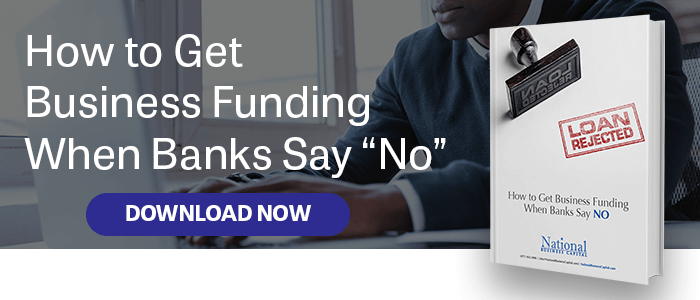Defaulting on a loan isn’t something any small business owner wants to think about. And why would they? After all, no one goes into a financial venture anticipating failure. However, the reality is, sometimes things don’t work out. Even though companies are required to go through a rigorous vetting process meant to determine if they’ll be able to pay back an SBA loan, occasionally a business won’t be able to make the required payments on time. So if you’re looking to apply for an SBA loan, you should be aware of the process that occurs after an SBA loan default. And know that even if you do default on an SBA loan, you still have possibilities available to you.

Unique Nature of SBA Loans
SBA loans aren’t like other loans made for small business; in fact, they can prove to be a premium option for companies looking to expand their operation. That’s because with SBA loans, businesses often receive lower interest rates and longer terms than they’d otherwise have access to. What’s important to remember about SBA loans is that they don’t come straight from the government. Indeed, if everything goes to plan, the Small Business Administration doesn’t need to get involved between the lender and the loanee at all.
Working with Your Lender
If you begin to struggle to make payments on your SBA loan, the first step you should take is to contact your lender. As with any loan, your bank or alternative lender doesn’t want you to fail to pay back your balance. That’s partially why big banks are working with small businesses now more than ever. So if you approach them and remain open and honest, you may be able to restructure the nature of the loan.
Loss of Assets
If a business habitually misses payments on an SBA loan payment, then the lender is entitled to claim compensation in the form of collateral on the loan. Unfortunately, this can mean that a lender has to sell off a the loanee’s business assets, or even foreclose on their properties to cover the debt.
The SBA
Occasionally, a lender won’t be able to recoup the entirety of the debt a small business owes them in the instance of an SBA loan default. It’s at this juncture that the government gets involved. The SBA guarantees to subsidize their loans (between 75 and 85% depending on the amount) and pay the lender the balance they’re still owed after the selling of assets and claiming of collateral. Once that happens, a loanee won’t have to deal with their lender anymore.
Rather, they’ll then be contacted by the SBA to hash out a program designed to help them pay back the remaining balance on the loan. In many instances, the two parties can reach an agreed-upon sum that is actually less than the full amount of the debt. However, it’s important to be aware that even at this stage the SBA can garnish wages if you still struggle to pay your debts back on time.
How You Can Avoid SBA Loan Default
If you’re feeling at all overwhelmed about the prospect of an SBA loan default –– don’t be. At the end of the day, an SBA loan is a fantastic option for small businesses, and it has the potential to drastically transform your company for the better. Don’t forget: the best way to stay out of debt is to set up a payment plan that works for you. To that end, you can contact the National Business Capital team today and we can help you get started on the path to securing the funding your business needs.
Save Yourself a Trip to the Bank
You’ve got options beyond the bank –– and for more info, download our free eBook here:
